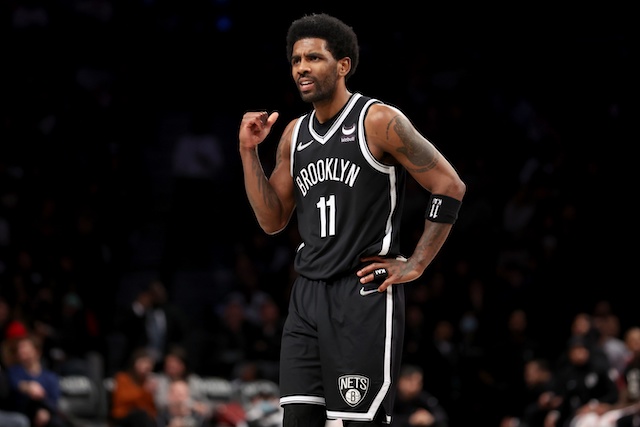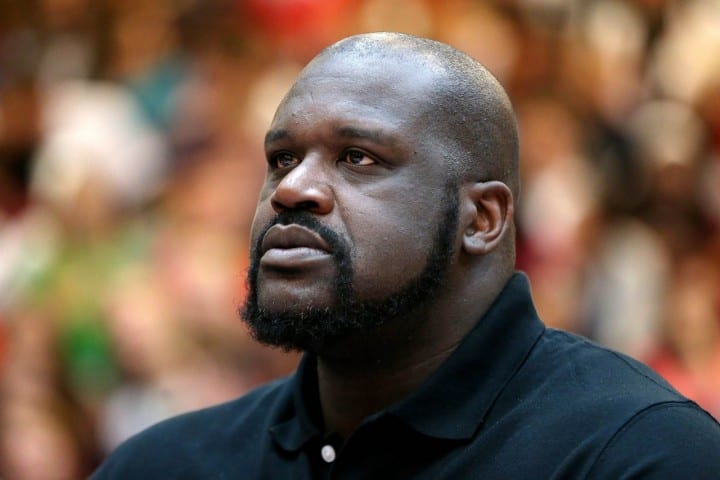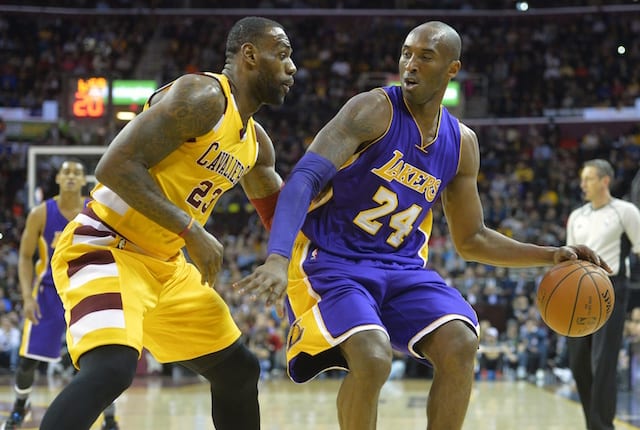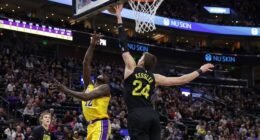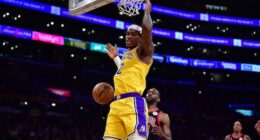The Kyrie Irving trade saga has dragged on for weeks with several plot twists taking place in the meantime. Still, the prevailing notion has been that Irving will join the Los Angeles Lakers — if not this summer, then in 2023 when he hits free agency.
But do the Lakers have the money to sign the playmaker next year if they don’t acquire him through a trade with the Brooklyn Nets?
With Russell Westbrook’s gigantic $47.1 million salary coming off the books, L.A.’s payroll will likely get significantly lighter next summer. As of now, only Anthony Davis, Max Christie, Talen Horton-Tucker and Damian Jones are under contract for 2023-24 with the latter two having a player option for the season. LeBron James doesn’t seem in a rush to sign the two-year, $97 million contract extension, which he will become eligible to ink on Aug. 4.
But the very first reports that suggested Irving could move to L.A. next summer also claimed he would do so to reunite with James — in addition to donning the same jersey the late Kobe Bryant once wore. Hence, any scenario in which the Lakers get Irving in the 2023 offseason needs to assume LeBron has extended his stay with the Purple and Gold — most likely on a two-year a deal with a player option for the following season so the four-time NBA champion can stay in control of his future when his son Bronny becomes draft eligible.
Dismissing any unlikely incentives, that brings the Lakers’ payroll up to about $102 million with James, Davis, Christie, Horton-Tucker and Jones on the roster — presuming the latter two picked up their player options) — and some $30.8 million under the projected 2023-24 salary cap of $133 million.
However, the Lakers wouldn’t be able to spend all that money on Irving. Teams with fewer than 12 players under contract are subject to an incomplete roster charge, which should amount to about $1.1 million per unused roster spot next year. Moreover, Austin Reaves and Scotty Pippen Jr. will become restricted free agents in 2023, unless the Lakers decide not to extend their qualifying offers and let them hit free agency without any restrictions — however, it’s hard to imagine L.A. giving up on Reaves after his impressive rookie season while Pippen’s qualifying offer won’t be much higher than an incomplete roster charge.
Adding all those extra expenses in, the Lakers could potentially pay Irving close to $22 million in 2023-24 and around $92 million in total over a four-year deal — providing that Reaves doesn’t receive an offer from another team that L.A. would have to match.
Next summer, Irving will be able to sign a four-year, $200 million max contract with anyone — and a considerably higher one if he returns to Brooklyn. However, NBA teams, including the Nets, are reportedly unwilling to offer the max to the eccentric guard.
Still, could Irving sacrifice over $100 million — half the money he’s eligible for — to reunite with James in L.A.? That’s… well, a (hundred) million dollar question.
A few reports did indicate Irving wanted to join the Lakers so badly he could have even opted out of his contract with the Nets and signed with the Purple and Gold using the $6.5 million taxpayer mid-level exception this summer. However, those hopes were quickly thwarted, as the guard picked up his $36.5 million player option days before the deadline on June 29.
The caveat here is that the above calculations assume Westbrook stays with the Lakers for another year. Meanwhile, more and more teams are being linked with a move for the 33-year-old’s expiring salary, most notably the Indiana Pacers. But in any deal, trading Westbrook away without taking on more long-term salary seems improbable — and so parting ways with the 2017 NBA MVP would likely further reduce the cap space available for a potential Irving signing next summer.
The trade with the Pacers would reportedly bring in Myles Turner and Buddy Hield in exchange for Westbrook and draft assets. While Turner’s contract expires next year, Hield still has over $40 million left on his deal over the next two seasons — virtually taking up the Lakers’ remaining 2023-2024 cap space if his addition is the only change made to the assumed payroll breakdown.
Without cap space, the Purple and Gold again could only offer Irving mid-level exception money, which could exceed $11 million in the first year of the deal if they can stay below the luxury tax line.
Whether Westbrook gets traded or not, LeBron could aid the Lakers’ pursuit of Irving by following James Harden’s lead and taking a significant pay cut when he signs his extension, increasing L.A.’s free agency budget. The Purple and Gold could also trade Horton-Tucker for an expiring contract, freeing $11 million in cap space — or try any other roster charades if they acquire other players, like Hield, between now and the 2023 offseason.
An example of this is the New York Knicks this summer as they attached draft capital to Kemba Walker to trade him to the Detroit Pistons in exchange for future draft picks, not taking back any current salary in return. They then did the same with Alec Burks and Nerlens Noel, trading them to the Pistons, which opened up more cap space to ultimately sign Jalen Brunson to a four-year, $104 million contract in free agency.
The Lakers could follow a similar path next summer if they have a legit shot at Irving, although that would likely require parting with some future draft capital to make it happen.
If the Lakers think Irving gives them the best shot at the title in the years to come, taking advantage of the turmoil in Brooklyn this summer might turn out to be the easiest path to signing him after all.
